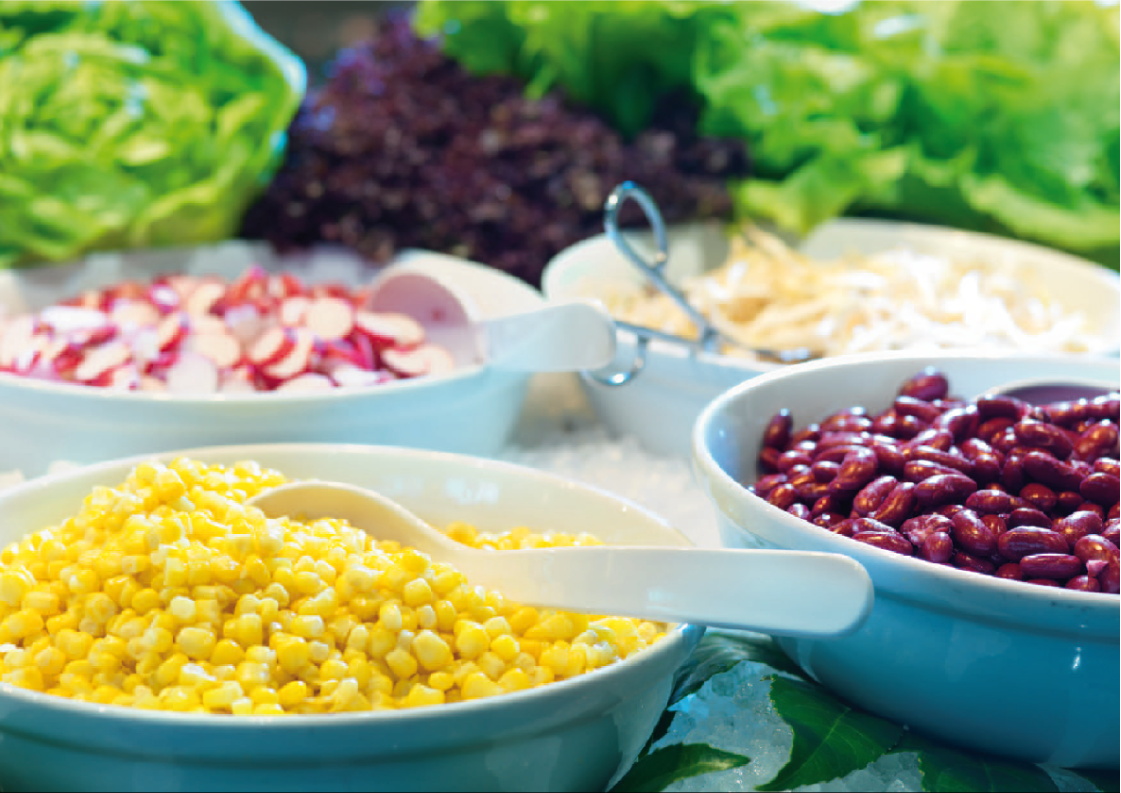
If the kitchen in my childhood house was a restaurant, it might call its cuisine “Romanian-Russian-Israeli-American fusion.” I’d commonly eat hummus, cheese and chopped salad for breakfast, borscht for lunch and beef stew for dinner, thanks to my immigrant parents’ and grandparents’ tastes and traditions. While those meals aren’t necessarily what people think of when they think of “a healthy diet” – oatmeal, nuts and fresh fruit for breakfast, grilled chicken salad for lunch and salmon with asparagus for dinner might better fit the mold – but they are quite healthy indeed.No matter what types of food, flavors and cuisines you enjoy or are a part of your culture, you can include them in a healthy eating plan. In fact, for the first time, the 2015-2020 dietary guidelines recognize the fact that everyone has a different diet or eating pattern. Some folks grew up on rice and beans, while others are used to eating mainly sushi and fish. No need to ditch those traditions just because they aren’t trending. After all, food is the center of family and culture. It’s a way to bond with loved ones, and helps create long-lasting, warm memories. Recipes passed down generations help maintain family history and keep alive memories of loved ones who have passed.
Still, there may be ways to make your eating habits healthier – without turning your back on your culture, tastes or family traditions. First, take a look at how varied your diet is. Your daily diet should be made up of different food groups, including whole grains, protein, fruits, vegetables, dairy and healthy fat, since each food group provides a variety of important nutrients.
Second, your meals shouldn’t go overboard on calories, saturated fat, added sugar and sodium – all of which Americans eat too much of, per the dietary guidelines. So, if you’re cuisine is filled with fried foods, consider modifying the cooking method. Instead of fried chicken, for example, try using crunchy panko breadcrumbs and baking the meat instead.
Portion sizes may be another factor to consider. For example, if you’re used to eating an Italian-based diet, you may be eating four to five servings of pasta in just one sitting. This habit can add hundreds of unnecessary calories to your diet and create unbalanced meals. Try adjusting the ratio of foods on your dinner plate by decreasing the pasta and increasing the vegetables. In addition, if dishes call for heavy butter or cream sauces, which are a source of saturated fat, consider tweaking them in order to make them lighterwith less saturated fat. Here are some other ways to lighten up traditional foods:
[See: 12 Unhealthy Foods With Health Benefits.]
- Increase fresh herbs and spices to add a ton of flavor and not a ton of calories.
- Decrease sauces and dressings by halving the amount you tend to use.
- Lighten the amount of oil. Every tablespoon of oil provides 120 calories. Although plant-based oils are healthy, it’s easy to go overboard. Using a half-cup of oil to sauce chicken isn’t necessary when you can get the same task done with 1 to 2 tablespoons and cut the calories by several hundred calories.
- Change the cooking method. Opt for baking over frying, or try “frying” in an air fryer, which keeps food crispy without the use of any oil.
- Add vegetables and fruits. Most folks don’t get enough produce in their diets. Increase the amount you add to each meal and decrease your portions of carbs to help better balance any plate.
- Swap white for whole grains. Use whole-wheat pasta instead of white, and swap the white rice on sushi for brown. Simple modifications like these can help increase the amount of whole grains in your diet, which can bring you closer to the recommendation to make half your grains whole.
Bottom line: No matter which type of foods you like to eat, with a little thought and consideration, they can fit into a healthy diet.
source:-usnews.